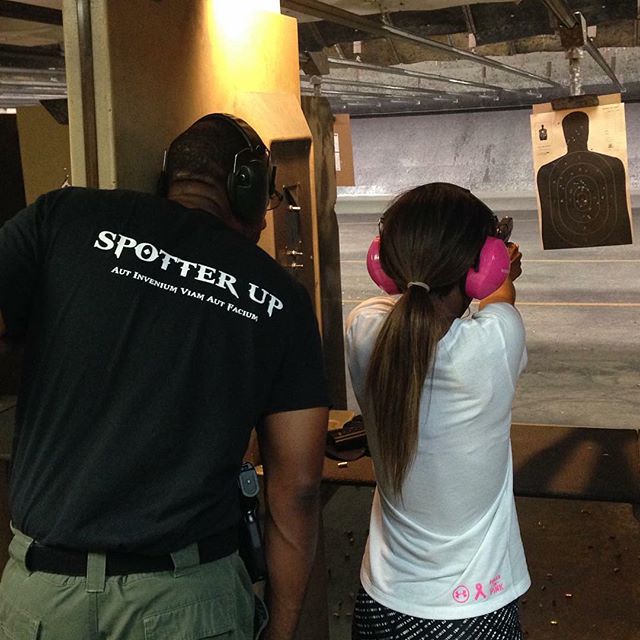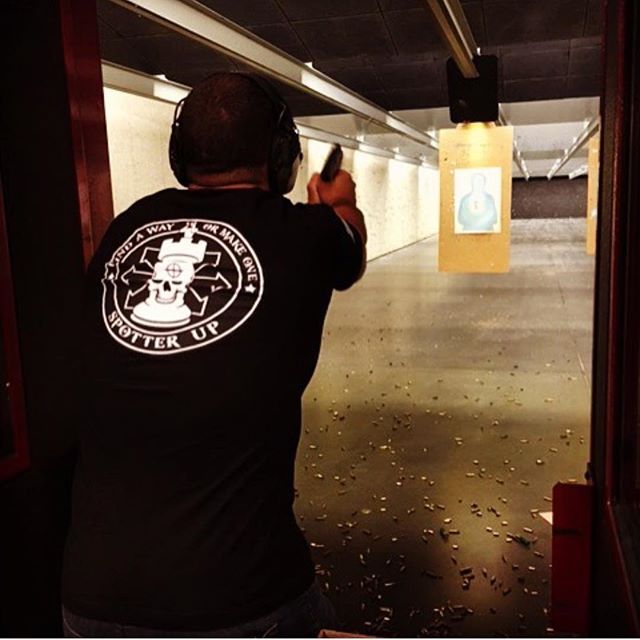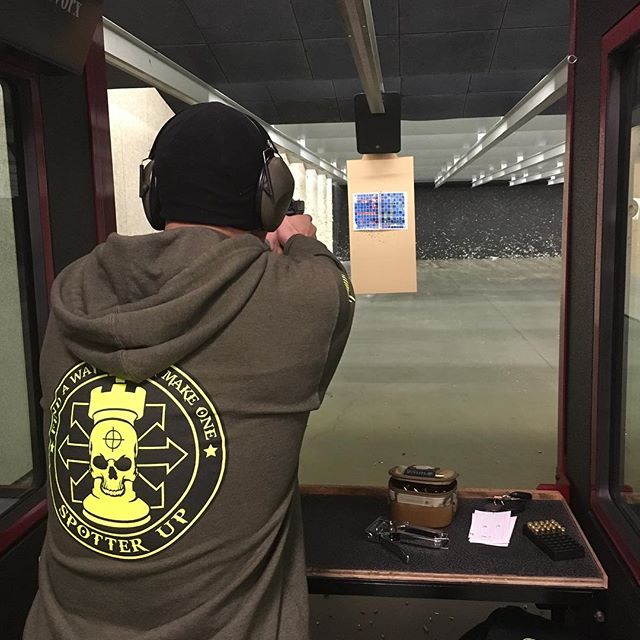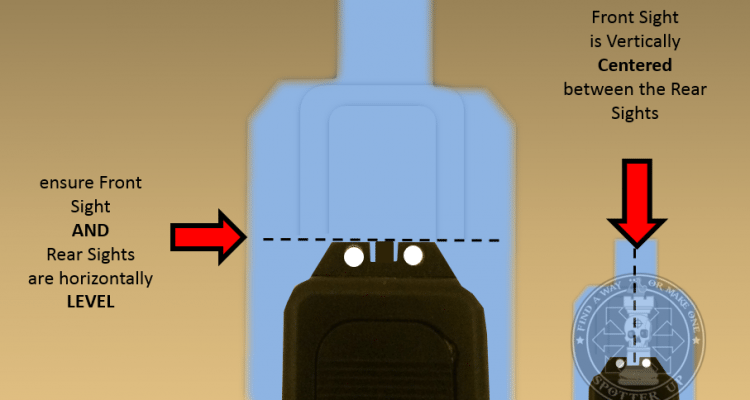DISCLAIMER/WARNING!!!
The opinions of this article are that of the author and do not reflect the thoughts and opinions of the other writers here at Spotter Up. Nor do these opinions reflect the broad opinion of Spotter Up as a whole. This is not an instruction manual for those seeking to be self-taught. This article is meant for entertainment and as a broad discussion platform only. If you wish to become trained in the proper handling of your firearms, seek training from a qualified and accredited instructor.
SAFETY FIRST
In this article, I leave out subjects like loading/unloading the firearm, safety rules, etc. This article is strictly covering the way we learn to SHOOT the pistol. Administrative lessons and safety rules always apply when handling a firearm of any kind. I am, by no means hinting that there is no room to teach safe gun handling. Again, I am only speaking about the shooting part of the teaching. Use safe gun handling methods at all times to prevent injury to yourself and others.
OVERVIEW OF THE FUNDAMENTALS
Pistols are undoubtedly one of the hardest firearms to master and be consistently good at using. People that shoot them for decades still have to go back to the basics at times and reinforce the concepts that contribute to a high level of speed and accuracy. Currently, shooting a pistol is taught in the same way as shooting a rifle. Traditionally, you would be taught to shoot a pistol in this order: Stance, grip, sight picture, trigger control, follow through, etc. This method has been the solid foundation for many of the worlds top firearms professionals and was the way I learned to shoot as well. But I often wonder if we could take lessons from past instruction and evolve how we teach new shooters. What if we changed the order of teaching the fundamentals in order to best prepare these beginner shooters for success?
IS IT POSSIBLE?
Many professional shooters will tell you that there are two basic things that dictate our ability to shoot well. Those two things are sight picture and trigger control. Sounds easy, right? Well it is, but it seems to be made harder than it has to be by arranging the order of the fundamentals the shooter learns. Currently the process is set in such a way that the students spend more time on mastering the support and control aspect of shooting, rather than mastering the actual firing sequence. Of course, with everything, there is a high degree of variation in the success to failure ratio from course to course and class to class. But some have been able to improve that ratio and cause more success by rearranging the process that their students learn the fundamentals..
Recently there have been shooting schools such as the Sig Academy that focus on getting the students to master their trigger control and sight picture. As far as I know, they have had much greater success in this concept of focusing on the most common fundamentals that dictate your success in shooting. Basically keeping the shooters concentrated on the two most vital fundamentals gives them the ability to establish a good base for their students to learn on.
Rob Leatham is another instructor that follows a similar routine. He teaches his students to pull the trigger as fast as they can without moving the gun before even teaching them to use their sights. Again, he has had amazing success at teaching people to shoot by using the most vital fundamentals before layering on fundamentals that will be subjective to the type of shooting you are looking to do. His philosophy is “what is the point in aiming if you are not going to be able to hold the gun still when you pull the trigger?” That is the simplest way to justify this method, and he is absolutely right.
My own experience has taught me alot over the years, and the biggest thing I learned is that the pistol shooting fundamentals need to be taught in a different way. The fundamentals never change of course, but the shooter is only going to prioritize the things that they are taught to prioritize. Theoretically, if new shooters are taught the most important things first, they will have a much easier time learning other skills because the important stuff will still take priority while they are adding other commands to follow. Basically, we would be using our own understanding of the learning process to teach these students. We as human beings, for the most part, only master that which we practice the most. And if we arrange our fundamentals in order of priority, I think that would be a game changer.
HOW?
Imagine a triangle, for example. The triangle is a good way to illustrate our skills and what takes priority, at least for the individual. If the width of the triangle indicates the accuracy capability/skill level and the height represents things like speed, we could theoretically form a triangle to illustrate our strengths and weaknesses.
Say for instance you have a narrow based triangle that is really tall. Well that, in this example, means the shooter knows the basics, but lacks the ability to translate it into accuracy. Some people who tend to lean towards being faster instead of more accurate would fall in this category. Sometimes, competition shooters follow this model in the attempt to get better times. The goal is speed in competition, so why not do what it takes and cut corners when seconds count, right?
How about the wide and short triangles? This shows they may be able to shoot very accurately, but not quickly. This is more like your stereotypical bullseye shooters. Great shots, but may not be well versed in other aspects of shooting. Malfunctions and reloads may not be something they care about doing at a lightning pace. Not all bullseye shooters are this way, but I just thought I would use that discipline as an example. Generally their philosophy is to take as much time as necessary to place the PERFECT shot. These people can be masters at the art of marksmanship, so don’t underestimate what they can teach you.
Then there are the square triangles where all the faces are even and each block is perfectly complemented by the block below it and there is complete uniformity.This should be the “skill triangle” we all aspire to form when training new shooters. Here, all of the shooters’ skills are perfectly complimented with speed. This of course is hard to obtain, and perhaps impossible, but should nonetheless be the ultimate goal.
TRIANGLE PRINCIPLE
When using the triangle analogy to teach people, you need to know what a good foundation is for your students of the gun. From there, you can add things on top for the foundation to support. The bigger and stronger the foundation, the more room you have to improve on the other skill sets. After pondering my experience, I found that people I worked with got really good at doing the things they spent the most time doing. If we arrange our fundamentals in a way that we spend the most time using the most important fundamentals, I feel the success rate could skyrocket. We would effectively be stacking the fundamentals in such a way that the things we did most were the things we start our foundation off of.
As humans, the order that we are taught things has always had a big impact on our ability to learn and expand on that learning process. Just like math, we learn the numbers first and then how to add, subtract, multiply, and divide those numbers. The reason is because we will always end up needing to do these basic calculations no matter what level of math we advance to learning. Makes sense, right?
It is an eye opener when I see people learning stance and breathing before learning to pull the trigger without moving the pistol. The students will struggle the whole way because they are having to perform alot of new commands, all at once. They will run through the fundamentals in the order they were taught. Of course, they will learn the fundamentals and attempt to apply them, but it can be pretty discouraging when you spend 30% of the time learning how to make the shot go where you need it to go, and the rest of the time learning how to set up for it.
The funny thing is that the majority of the corrections for a missed shot is on the things the instructor only spent 30% of the time teaching. But good thing their body was in a good stance and braced for the recoil of that missed well-aimed shot though, right?
TRIANGLE COMPOSITION
After a bit of research and brainstorming, I found that there are three big categories that go into shooting and operating a pistol: Firing the pistol, supporting/controlling the pistol, and manipulating the pistol.
I imagine some people would want to merge a couple blocks, or even split some into more specific blocks. That is fine, but I feel that these three blocks can effectively represent the building blocks for learning to shoot a firearm. Keeping it simple with three feels like a good base to start.
When I looked at the firing portion of how to shoot a pistol, I found 3 things that we do that directly affect our ability to make accurate shots, in this order:
- Gripped the pistol with one hand, at the least. At any given point, there is a hand on the pistol, gripping it.
- Pulled the trigger while attempting to hold the pistol and prevent movement by applying a solid grip, with at least one hand.
- Aligned the sights to the target while pulling the trigger without moving the sights/pistol, and applying a solid grip with at least one hand.
It seriously was that simple for me to figure out what I think the process for teaching the fundamentals should be. I mean, doesn’t it make at least a little sense? Three videos below:
This would be the process for the Firing block of your 101 training. Personally, I would follow Rob Leathams’ example on doing live fire where the student is just shooting the gun at a close target without aiming. This typically will prove to them that it isn’t the sights being aligned that will be the challenge, but pulling the trigger as fast as you can without moving the gun. If they do it right, their shots should hold a pretty nice group. Then I would incorporate sights, as he does in his training.
From there you have the Support block which involves the two handed grip, stance/position, and everything you need in order to control recoil better. For this block, I think grip should come first, followed by stance, and finally position.
Lastly, you have your manipulation block to top it all off. This incorporates reloads, malfunctions, drawing, etc. This is where it would really be on the instructor or coach to decide what to teach first and the order for the rest. Personally, I would teach draw, reloads, and malfunctions in that order.
Once all three blocks are set up, you effectively have created a triangle of shooting skills where all the skills at the top are supported and hopefully complimented by the skills supporting them, all the way to the firing block foundation. This triangle may change in size, girth, and height depending on how you use your skills, but it is on the shooter to determine how their triangle grows or shrinks beyond that. I guess you could also call this “trickle down fundamentals” if you so choose. It kind of does work as a trickle down system if you consider the fact that proficiency is based on the speed at which we can apply the basics.
REVIEW
When we look at how we learn and we try to apply it to firearms, we should make sure that the system we use is a sound system. The standard method for learning to shoot today may not be the best or most practical way to train people on. As instructors, teachers, coaches, we have to be able to deliver information and get students to be able to achieve the goals we have set for them. Piling on steps for students to learn and expecting them to just get it is not a nice way to go about things. Of course, we and the students don’t know any better. Perhaps if we start looking at human psychology, we could find a way to enhance the learning experience and really cut corners. I believe the Shooting Triangle can do just that.
*The views and opinions expressed on this website are solely those of the original authors and contributors. These views and opinions do not necessarily represent those of Spotter Up Magazine, the administrative staff, and/or any/all contributors to this site.
Brought to you by the dudes at Spotter Up




